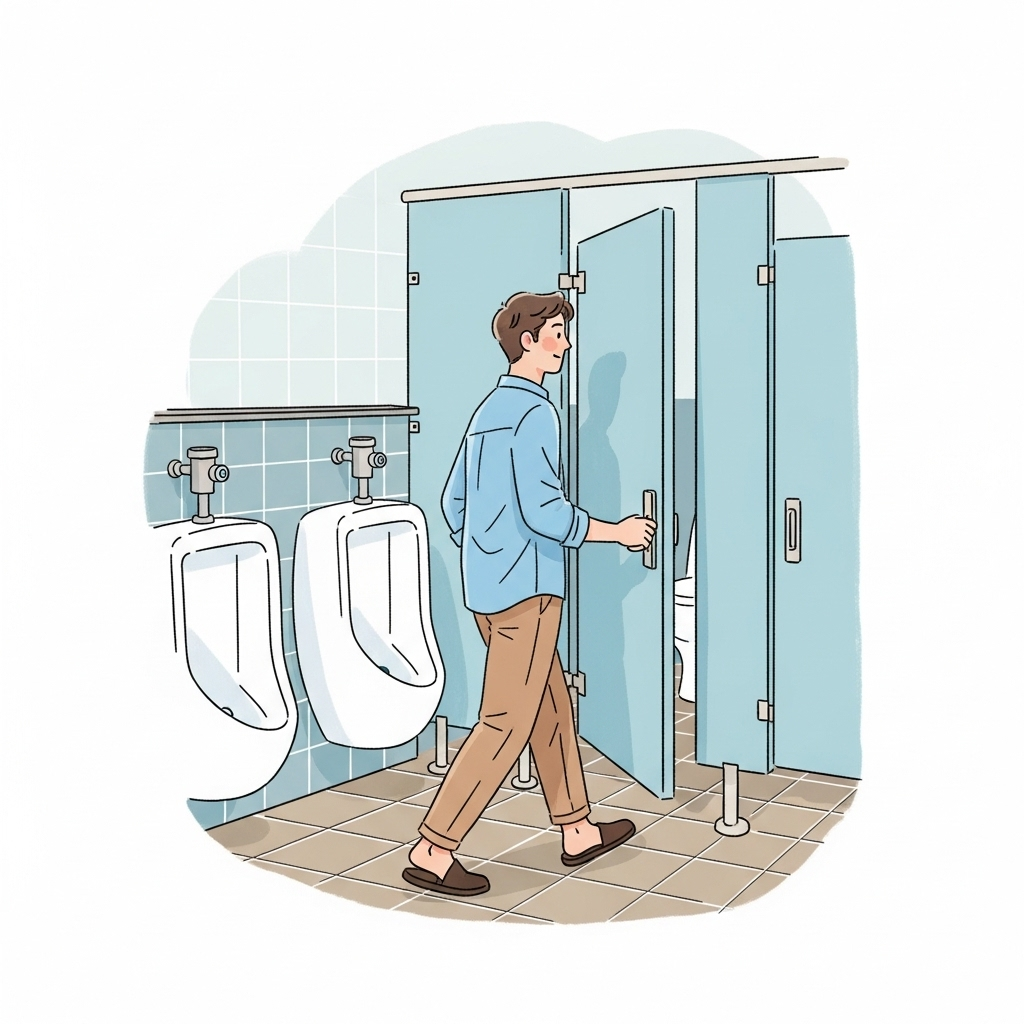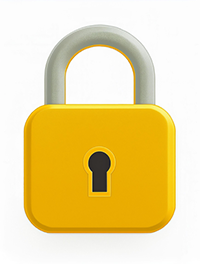Health and Safety
Note: I am not a doctor, and nothing on this page, or this site, should be considered medical advice. Always consult a qualified healthcare provider if you have health concerns, experience pain, or are unsure about any aspect of chastity device use. The information here is based on personal experience, reputable sex-positive resources, and the best available medical evidence I can find through Google. Yes, this is boilerplate legalese, but I'm not going to pretend that I am competent to give medical advice. I am not a doctor, and I don't play one on the internet. Really, find a kink-friendly doctor and go talk to them if you have any concerns about your health or safety with regards to chastity.
Quick Navigation
Physical Health: Hygiene, Device Safety, and Skin Care
Keeping things clean and comfortable is the foundation of safe and pleasurable chastity play. A well-chosen, well-maintained device and good hygiene habits will help you avoid most problems, so you can focus on the anticipation and connection chastity brings.
Daily Hygiene
Whether the cage is locked on for a day or a month, daily cleaning is non-negotiable. For effective cleaning, use mild, unscented soap and warm water. A squeeze bottle helps reach difficult areas, and a soft brush can address stubborn spots. Always dry thoroughly to prevent irritation and odor.
The choice of cage matters in hygiene; open metal cages are generally easiest to keep clean while being worn, allowing water and soap to reach everywhere, while closed tube devices may need to be removed more often. Plastic devices retain smells, while metal does not. If your goals are longer term continuous wear, an open metal device makes good hygiene a lot easier.
While many men wear a cage for extended periods without removal, it's recommended that once a week the device should be removed for a deep clean and a careful inspection of your skin. This check can often be combined with another activity, such as a longer bike ride where removal is required anyway, to reduce the need for additional interruptions. This can also be a great opportunity for a shared shower, turning hygiene into a sensual ritual.
Check for redness, irritation, or broken skin every day. If you notice any, remove the device and let your skin heal before relocking. Consider using a barrier cream (like Sudocrem) on areas prone to rubbing. Trim or shave pubic hair to minimize pulling and keep things fresh.
For uncircumcised men, it seems that almost daily removal to clean under the foreskin may be necessary, depending on your anatomy and the cage. This is vital for preventing infection and maintaining comfort (The Healthy Bear).
Peeing and Toilet Use While Locked

One of the most immediate adjustments for new wearers is learning to urinate while locked. This practical reality affects daily life more than almost any other aspect of chastity, and getting comfortable with it early makes everything else much smoother.
At first, sitting down to urinate while locked is highly recommended. The probability of making a mess is high when you try to stand: with sprays, splashes, and often unpredictable streams, cleanup hassles are almost guaranteed at the beginning. Sitting eliminates most risk of making a mess, on the floor or in your pants, and makes daily life smoother. Sitting eliminates stress, prevents embarrassing situations, and makes life easier for everyone.
Some men resist this change at first, viewing it as somehow affecting their masculinity. Many, if not most, though, quickly realize that sitting is simply more practical and comfortable. Your partner will love that the toilet seat stays down and there's never splash around the bowl. The psychological adjustment is brief, and soon you won't think twice about it.
Now, some experienced wearers do eventually figure out how to stand successfully. It takes time, patience, and the right combination of device design and personal anatomy. Open metal cages generally offer better control than closed tubes, but even these can redirect flow unpredictably. Temperature, arousal level, and whether you're a grower or shower all affect how things sit in the cage. Uncircumcised men face additional challenges with positioning and complete emptying.
If you're determined to master standing, practice extensively at home first. Accept that there will be mishaps -- wet pants, unexpected messes, awkward cleanup situations. Even experienced wearers who can usually manage standing will tell you about times when everything went wrong at the worst possible moment. Always have backup plans and cleanup supplies ready. Some wearers have few problems, but many decide the effort just isn't worth the trouble.
Public restrooms add another layer of complexity. Sitting means using stalls rather than urinals, which sometimes means waiting or dealing with less-than-ideal cleanliness. But it also means predictable results instead of hoping your aim works perfectly when you're in a hurry, or hoping that a final unanticipated stream doesn't end up down your pant leg.
Regardless of your approach, hygiene is crucial. Any urine that contacts the device or skin should be cleaned promptly to prevent odor or irritation. Many wearers find that a quick rinse with water after urinating helps maintain freshness, especially during longer periods of continuous wear.
Device Fit and Safety
A properly fitted device should feel snug but never painful. If you experience numbness, persistent pain, or discoloration, remove the device immediately. Custom-fitted or high-quality devices made from medical-grade materials (like stainless steel or silicone) are less likely to cause problems than cheap or poorly finished cages (The Guy Shack: Safety of Chastity Devices).
Emergency Removal
Health and safety come before chastity. Keep a spare key in a secure but accessible spot (some use a tamper-evident envelope). If you experience severe pain, swelling, loss of sensation, or cannot urinate, remove the device immediately and seek medical help. Emergency rooms have seen cases where devices needed to be cut off with specialized tools (PubMed: Emergency Removal of Penile Rings). It may be embarrassing, but medical professionals are there to help.
Emotional and Mental Health: Coping, Aftercare, and Support
Enforced chastity can bring up powerful emotions: excitement, frustration, vulnerability, and sometimes even anxiety or sadness. These feelings are normal, and learning to navigate them is part of what makes chastity such a transformative experience.
Coping with Frustration and Emotional Lows
Frustration is a fundamental part of enforced chastity. Sometimes it's a buzzing high, but sometimes it's just tough. Mindfulness practices, like taking a few deep breaths or journaling your feelings, can help you stay grounded. Channel that energy into acts of service, affection, or shared hobbies with your partner. If you feel overwhelmed, talk openly with your keyholder and consider taking a break.
Exercise is a great outlet for pent-up energy. The author, and many wearers, find that a brisk walk, bike ride, or even a few push-ups can help manage the edge. Get some blood flowing and concentrate on something other than the cage. This can help you feel more centered.
Aftercare and Reconnection
After a long lockup or an intense release, emotional aftercare is vital. Cuddle, share affirmations, or simply spend quiet time together. This helps both partners transition smoothly and keeps the emotional connection strong. If you feel adrift after orgasm, let your partner know. Sometimes a little reassurance is all you need to feel cherished and secure again.
When It's Too Much
If emotional distress persists despite good communication, it may be time to pause chastity. The When To Stop section can help you recognize when taking a break is the healthiest choice for your relationship.
Frequently Asked Health Questions
Nocturnal Erections
Waking up with discomfort due to an (attempted) erection is, unfortunately, not unusual until your body adapts. A well-fitted device will allow some expansion without pain, but if you're woken repeatedly or feel significant discomfort, try a larger ring or (counterintuitively) a smaller cage, and maybe take breaks at night until your body adjusts. Most wearers report that nocturnal erections become less disruptive over time as the body adapts, so in most cases it's just something to work through with time and adaptation.
Getting up and using the toilet can help relieve erection pressure and discomfort, although it doesn't help with getting more sleep.
Prostate Health and Ejaculation Frequency
First, as noted at the top of this page, remember that the author is not a doctor or health professional. I've done a bunch of research on this because of concerns about my own health, and I want to share what I've learned, but, again, this is not medical advice.
The relationship between ejaculation frequency and prostate health remains an area of ongoing research. Some studies, including specifically the Harvard Health Professionals Follow-up Study, suggest potential protective effects from frequent ejaculation in older men. However, the findings vary by age group and study design, with some studies showing no clear benefit and others showing mixed results for different age ranges.
What I understand from these studies is that they show correlation, not causation. Men with very low ejaculation frequencies may have underlying health conditions that both reduce their sexual activity and affect cancer risk. The research is preliminary, often conflicting, and doesn't provide clear guidance for individual decisions about sexual behavior.
Per the Mayo Clinic:
"At this time, there is no conclusive evidence that frequent ejaculation reduces the risk of prostate cancer. Some studies have suggested that men with a higher frequency of ejaculations may have a slightly lower risk of prostate cancer. However, this difference appears to be very small. Other studies haven't supported this conclusion."
If you have specific concerns about prostate health, discuss them with your healthcare provider who can assess your individual risk factors and medical history. For couples practicing chastity, keep in mind that the body has natural mechanisms for release when needed, and that intimate connection with your partner offers many health benefits beyond just ejaculation frequency.
Long-Term Wear: Is It Safe?
With good hygiene, regular skin checks, and a well-fitted device, many men wear chastity cages for weeks or even months at a time without problems. However, everyone's body is different. If you notice persistent discomfort, skin changes, or emotional distress, take a break and reassess. Long-term chastity should always be a choice, not a punishment.
Can Devices Cause Permanent Damage?
There is no evidence that properly fitted devices cause erectile dysfunction, permanent shrinkage, or urinary problems. Some men notice temporary changes in sensitivity or appearance, but these resolve quickly after removal. Pain, numbness, or discoloration are warning signs, and you should remove the device and let things recover.
Remember: Your health and happiness are the foundation of a rewarding chastity experience. Take care of your body, honor your feelings, and never hesitate to pause or seek help if something doesn't feel right. Chastity should always be a source of excitement, intimacy, and joy, not pain or worry.

The author wears a metal cage that is open enough to maintain good hygiene normally in the shower during the week. Once a week the device is removed (usually for a bike ride) and everything is given an extra good scrub.
It should be noted that the toilet seat always being down with no splash around the toilet is one of the hygiene benefits some keyholders find attractive about chastity!